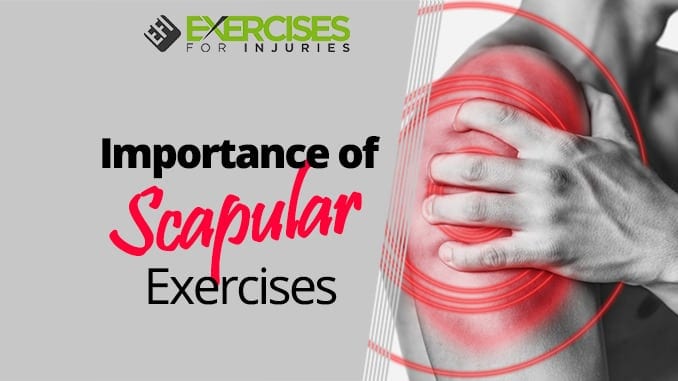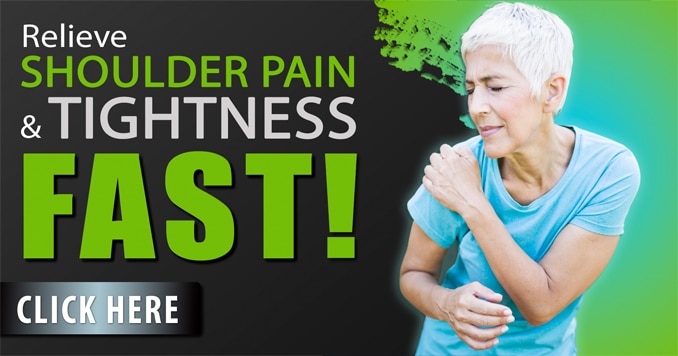Today I have an interview for you on the Importance of Scapular Exercises.
This interview is with a fitness professional specializing in injury and a passion for the shoulder.
Well, the discussion is with me.
Enjoy the interview with me as I chat about scapular exercise.
Kate Vidulich: Hey, this is Kate Vidulich from OutbackFitness.com. Today, I have an extraordinary interview for you. We will be talking about a bit of shoulder pain.
The importance of Scapular Stabilization and scapular exercises, specifically preventing and treating shoulder injuries, will be discussed.
We will also discuss chronic injuries and pain and the best ways to manage these situations.
On the line today, I’ve got an exceptional guest, Rick Kaselj, from exercises for injuries.
I’ll have him introduce himself and then will get to the questions. All right, thanks, Rick, take it away.
(Throughout the interview, I will present a few videos that complement the discussion. Here is a scapular exercise with the foam roller.)
Rick Kaselj: Thank you very much, Kate. My name is Rick Kaselj, and I am an injury and exercise expert. I’m a personal trainer/exercise physiologist/kinesiologist in Vancouver, BC, Canada. I help people overcome their injuries and pain by utilizing exercise.
Early in my career, I would have people come to the gym, and everyone I saw had some lingering injury that needed to be dealt with.
A lot of times, they would say, “I have this. Do you know of exercises I can do for this injury?”
And as I kept seeing more and more of these clients, it forced me to head out there and do more research and better understand injuries and what exercises to do for different types of injuries and pain.
It evolved from the training and then taught other trainers and coaches what exercises to do. And now, I have ExercisesForInjuries.com, where I write, do videos, and create workouts on a wide variety of injuries (neck injuries, shoulder injuries, back injuries, hip injuries, knee injuries, etc.).
That’s kind of who I am, Kate.
Kate Vidulich: Wonderful, Rick, this is fantastic. I know your website has been going for quite some time. It has been very beneficial to my clients and me. You have a great product that you have created, mainly on scapular stabilization which has helped me and my clientele.
Can you tell me primarily who the product is targeted?
Rick Kaselj: Maybe I will explain scapular stabilization for those who don’t know.
(Here is me talking about the importance of scapular exercises with a frozen shoulder.)
Kate Vidulich: Yeah, you got it.
Rick Kaselj: If we look into the shoulder, three groups of muscles play a role.
- There are the superficial muscles; those are the forces we can see. These superficial muscles end up providing gross movements for moving the arm. For example, the chest (pec major), shoulders (deltoid), and then the back (latissiumus dorsi).
- The second group stabilizes the bone in the shoulder whenever you do any movement. They turn on, pulling the upper arm into the shoulder joint to keep it nice and fixed whenever you move the arm, and those end up being the rotator cuff muscles.
- The third group often discussed is the shoulder blade muscles or scapular stabilizers. These are all the muscles that are around the shoulder blade. What that shoulder blade muscles do is move the shoulder blade whenever we move our arms. And work most effectively and efficiently.
What often happens is that those shoulder blade muscles are stabilizers; if there’s any pain, injury, or poor posture, these muscles end up being turned off and not working correctly, increasing your risk of injuries. It could be neck pain, shoulder impingement, and frozen shoulder. It increases your risk of rotator cuff injury because since the scapular muscles are not doing their job, the rotator cuff muscles have to work even more complexly. Eventually, they can’t take it anymore and get injured.
That’s the little story on those scapular muscles and why they are so important.
Kate Vidulich: Yeah. I mean, this kind of issue affects so many people. This information can apply to anyone in the general population with any neck or shoulder pain.
Rick Kaselj: Definitely.
One thing that affects the shoulder is here in North America; we do a lot of sitting. It can be driving or going on the subway to work. While we are at work, we sit, and at home, we sit while watching TV or checking email. It all ends up being in the sitting position.
And if we end up being rounded forward in the shoulders, that ends up lengthening those scapular muscles and putting them in a poor position so they can’t work correctly, which puts more stress on that rotator cuff muscle.
Poor posture puts the shoulder in a poor position and the head in a poor place, increasing the risk of pain in those two areas, the shoulder and the neck, and increasing the chance of neck and shoulder pain.
It’s essential to address those scapular muscles. The common mistake people make when working their shoulder blade muscles or their scapular muscles is that they focus on rowing movements.
(This is a video on if scapular exercises are wrong for the rotator cuff.)
And that’s good; working on those rowing movements is essential. That’s one of the movements for one of the muscle groups you want to work on, but it’s like living on one type of food.
Just like only eating vegetables and not eating everything else. There are other movements and muscles that you need to focus on when targeting those scapular muscles.
Kate Vidulich: Very interesting because it also sounds like you need to get some activation happening.
And I think that’s what many people forget when they try to do workouts, as you say, and they start to grow.
You also talked about pre-rehabilitation right now and rehabilitation.
Can you explain the difference between the two and how they can be incorporated into an exercise program?
Rick Kaselj: If we look at the difference between pre-rehabilitation and rehabilitation, rehabilitation is recovery from an injury, and pre-rehabilitation is doing things to prevent injuries.
That’s the definition of the two.
When it comes to rehabilitation and pre-rehabilitation, many people think that that’s all they have to do.
They have to go and do 30 minutes or an hour and a half of all these low-level exercises that aren’t very exciting and are not helping them reach their fitness goals, fat loss goals, or performance goals.
In that case, I end up intertwining those pre-rehabilitation and rehabilitation exercises into someone’s program so that they spend maybe 5 to 10 minutes just working on these specific exercises.
Kate Vidulich: Excellent. This is great because I feel like many people bypass all these kinds of movements because they are often not the most exciting in an exercise program.
(Here are a few kind words on my Scapular Stabilization Exercise program.)
Rick Kaselj: Yeah.
I had this experience. I’ve gone to physical therapy for my back pain. I injured my back, and when I was at physical therapy, they gave me a bunch of random exercises. I remember sitting there for 45 minutes doing these boring exercises that helped a little bit, but it almost put me to sleep.
~~~End of Part 1~~~
That is the end of part one of the interview. I will be back with the second part in a few days.
If you would like to check out my Scapular Stabilization Exercise program, you can here:
Take care, and have a great day.
Rick Kaselj, MS


